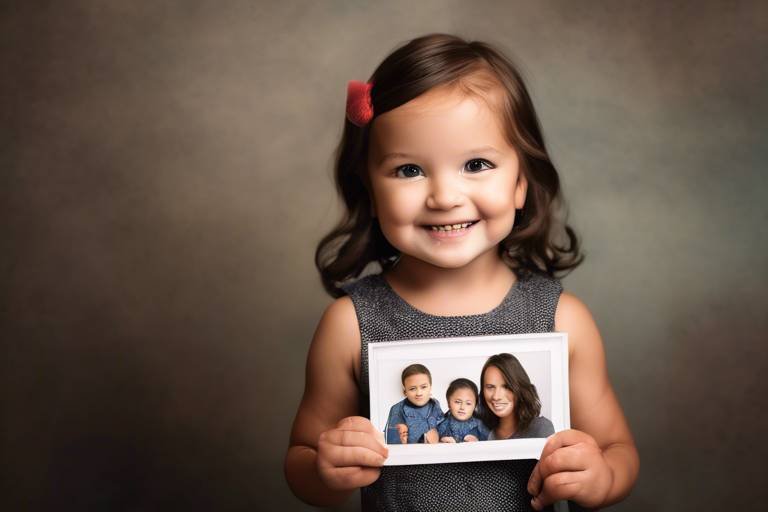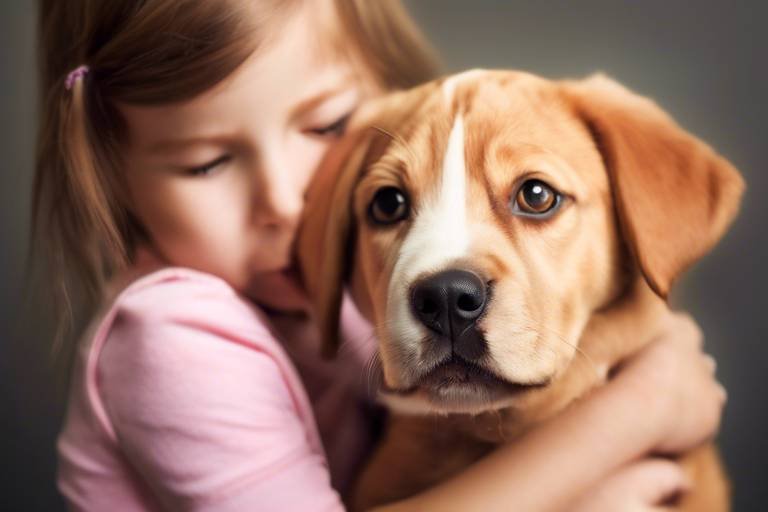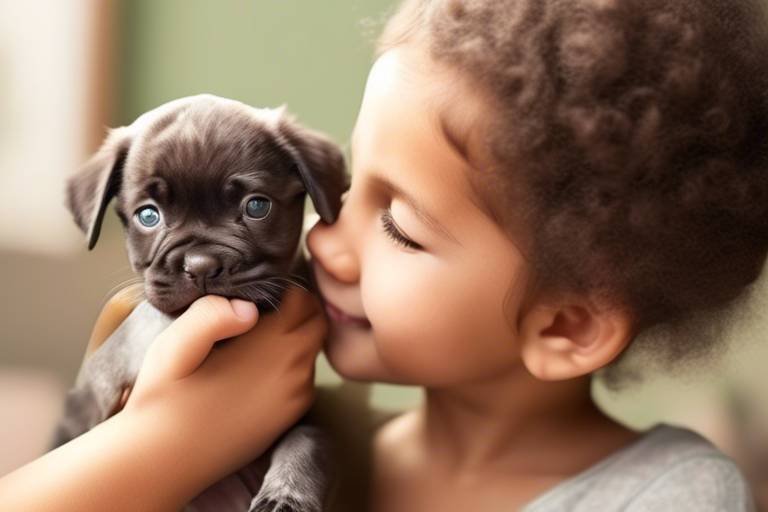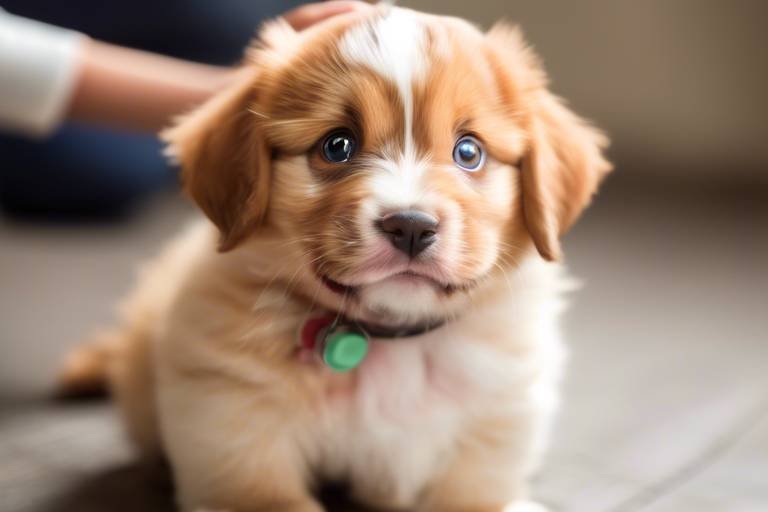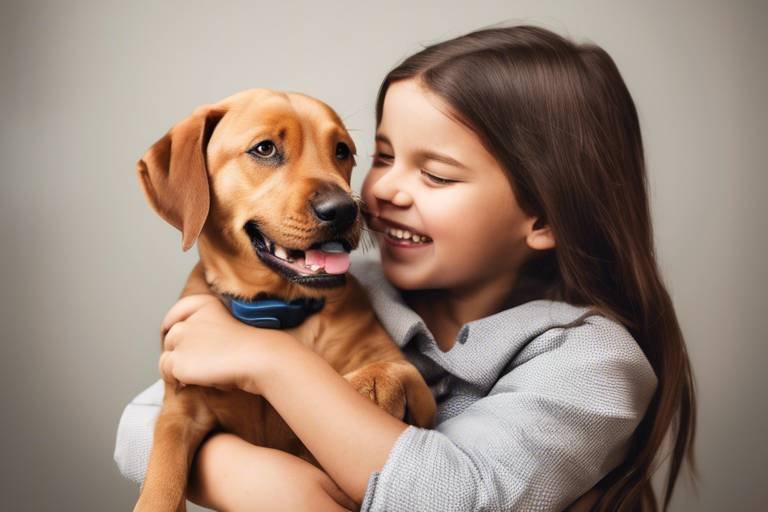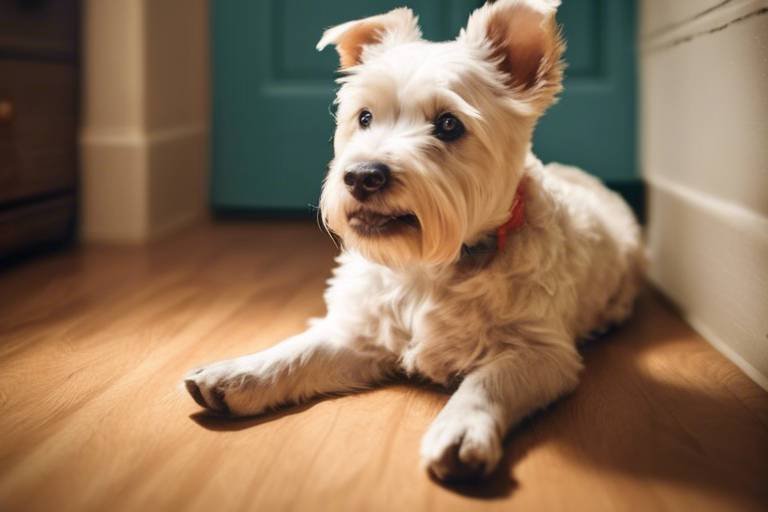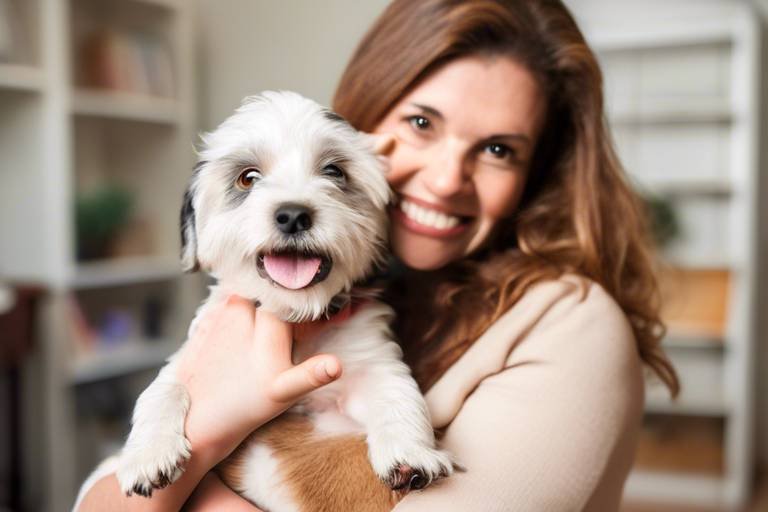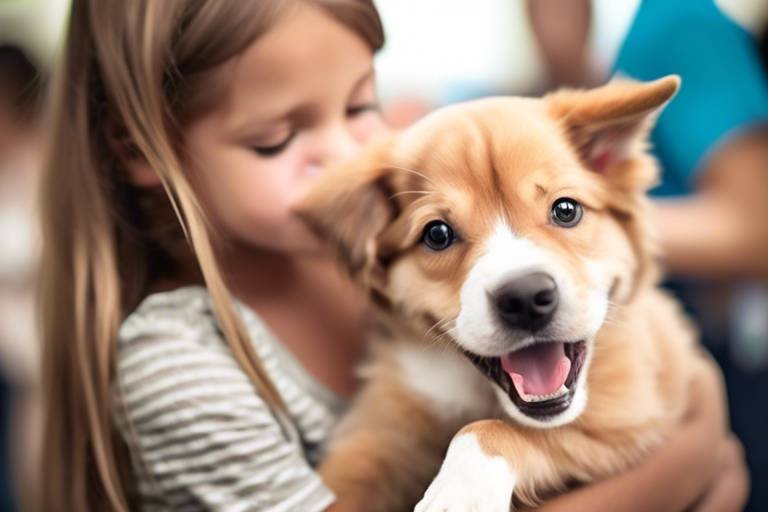How to Create an Adoption Ambassador Program
Creating an Adoption Ambassador Program is a fantastic way to promote pet adoption and engage your community. This initiative not only helps animals find loving homes but also cultivates a network of passionate advocates who can inspire others to take action. Imagine a community where every pet has a home, and every person knows how to help! By establishing a structured program, you can harness the power of volunteers and community members who are eager to make a difference. In this article, we will explore the steps to create an effective program, emphasizing its significance in animal welfare and community engagement.
Adoption ambassadors are more than just volunteers; they are the heartbeat of your adoption efforts. Their primary goal is to connect potential adopters with pets that need homes, acting as advocates for animal welfare. Think of them as the bridge between the community and the animals in shelters. They share their own experiences, answer questions, and provide support to those considering adoption. By fostering relationships within the community, adoption ambassadors can significantly increase adoption rates and create a culture that values animal welfare. It's crucial to recognize that these individuals are not only promoting adoptions but also educating the public about responsible pet ownership and the importance of spaying and neutering.
Finding the right individuals to join your program is essential for its success. Look for passionate volunteers, foster caregivers, and community members who have experience with pets and a genuine desire to promote adoption. These individuals often have stories to tell and a connection to the cause that can inspire others. You might consider reaching out to local pet owners, animal lovers, and even businesses that support animal welfare. Remember, the best ambassadors are those who can share their enthusiasm and knowledge with others. Their personal experiences can be powerful motivators for potential adopters.
To effectively recruit adoption ambassadors, consider a variety of strategies that can attract dedicated individuals. For instance, hosting informational sessions can provide potential ambassadors with insights into the program and its impact on the community. You can also leverage social media to reach a broader audience, sharing engaging content that highlights the rewards of being an ambassador. Collaborating with local organizations, such as veterinary clinics and pet stores, can also help you connect with like-minded individuals who are already invested in animal welfare.
Engaging the community is vital for recruitment. Organizing events that educate the public about pet adoption and the ambassador program is a great way to encourage participation. These events can take various forms, such as:
- Workshops on responsible pet ownership
- Meet-and-greet events with adoptable pets
- Community clean-up days at local shelters
Such activities not only raise awareness about adoption but also foster a sense of belonging among participants. When people feel connected to a cause, they are more likely to get involved.
In today's digital age, utilizing social media platforms can significantly widen your reach. Share success stories of adopted pets and highlight the efforts of your ambassadors. Create engaging content, like videos and infographics, that showcase the impact of your program. Encourage ambassadors to share their experiences on their personal social media accounts, which can help attract potential adopters and new ambassadors alike. Remember, the more you share, the more people will see the incredible work being done and want to be a part of it!
Providing thorough training for your ambassadors is essential to ensure they are well-equipped to advocate for adoptions. Offer resources, workshops, and ongoing support to help them succeed in their roles. Training can cover topics such as:
- Understanding the adoption process
- Effective communication skills
- How to handle common objections from potential adopters
By investing in your ambassadors, you empower them to be confident and knowledgeable advocates, which ultimately leads to higher adoption rates.
A well-structured program outlines specific roles, responsibilities, and goals for adoption ambassadors. This clarity helps maintain focus and ensures that ambassadors effectively contribute to the mission. Clearly defining what is expected of each ambassador can help them feel more confident in their roles and provide a roadmap for success.
Establishing clear goals and metrics allows for effective evaluation of the program's success. Regular assessments can help identify areas for improvement and celebrate achievements. For example, you might track the number of adoptions facilitated by ambassadors or the engagement rates of social media posts. This data can be invaluable in refining your approach and demonstrating the impact of your program to stakeholders.
Recognition and rewards for ambassadors can enhance motivation and commitment. Consider implementing a system of appreciation, such as thank-you events or incentives for outstanding contributions. A simple shout-out on social media or a small token of appreciation can go a long way in making ambassadors feel valued and appreciated. When they know their efforts are recognized, they are more likely to remain engaged and enthusiastic about their roles.
Q: What qualifications do I need to become an adoption ambassador?
A: While there are no formal qualifications, a passion for animal welfare and some experience with pets can be beneficial.
Q: How much time do I need to commit as an ambassador?
A: The time commitment can vary based on the program's needs and your availability. Many ambassadors contribute a few hours a month.
Q: Can I help even if I can't adopt a pet myself?
A: Absolutely! Adoption ambassadors play a crucial role in promoting adoption, even if they can't adopt themselves.

Understanding the Role of Adoption Ambassadors
Adoption ambassadors play a vital role in the world of animal welfare. Think of them as the bridge connecting loving homes with pets in need. These dedicated individuals are not just volunteers; they are passionate advocates who help increase awareness about the importance of pet adoption. By sharing their personal experiences and stories, they can inspire others to consider adopting a furry friend. Imagine walking into a room filled with potential adopters, and an ambassador passionately sharing the tale of a rescue dog who found its forever home. That connection can be the spark that ignites someone’s desire to adopt.
In essence, adoption ambassadors serve as the face of the organization within the community. They engage with the public, answer questions, and provide valuable insights into the adoption process. Their enthusiasm can be contagious, making it easier for potential adopters to envision welcoming a new pet into their lives. Whether it's through social media, community events, or one-on-one conversations, these ambassadors are essential in spreading the word about the joys of adopting a pet.
Furthermore, adoption ambassadors often take on additional responsibilities, such as:
- Fostering Relationships: They build connections with local businesses, schools, and community organizations to promote adoption events.
- Education: They educate the community about responsible pet ownership, the benefits of spaying/neutering, and the challenges of pet care.
- Support for New Adopters: They provide support to new pet owners, ensuring a smooth transition for both the pet and the family.
By embodying the mission of the organization they represent, adoption ambassadors not only help increase adoption rates but also foster a sense of community. Their efforts can lead to a more informed public that understands the responsibilities of pet ownership. In a world where countless animals are waiting for a loving home, the role of an adoption ambassador becomes even more significant. They are the champions of change, encouraging people to open their hearts and homes to pets in need.
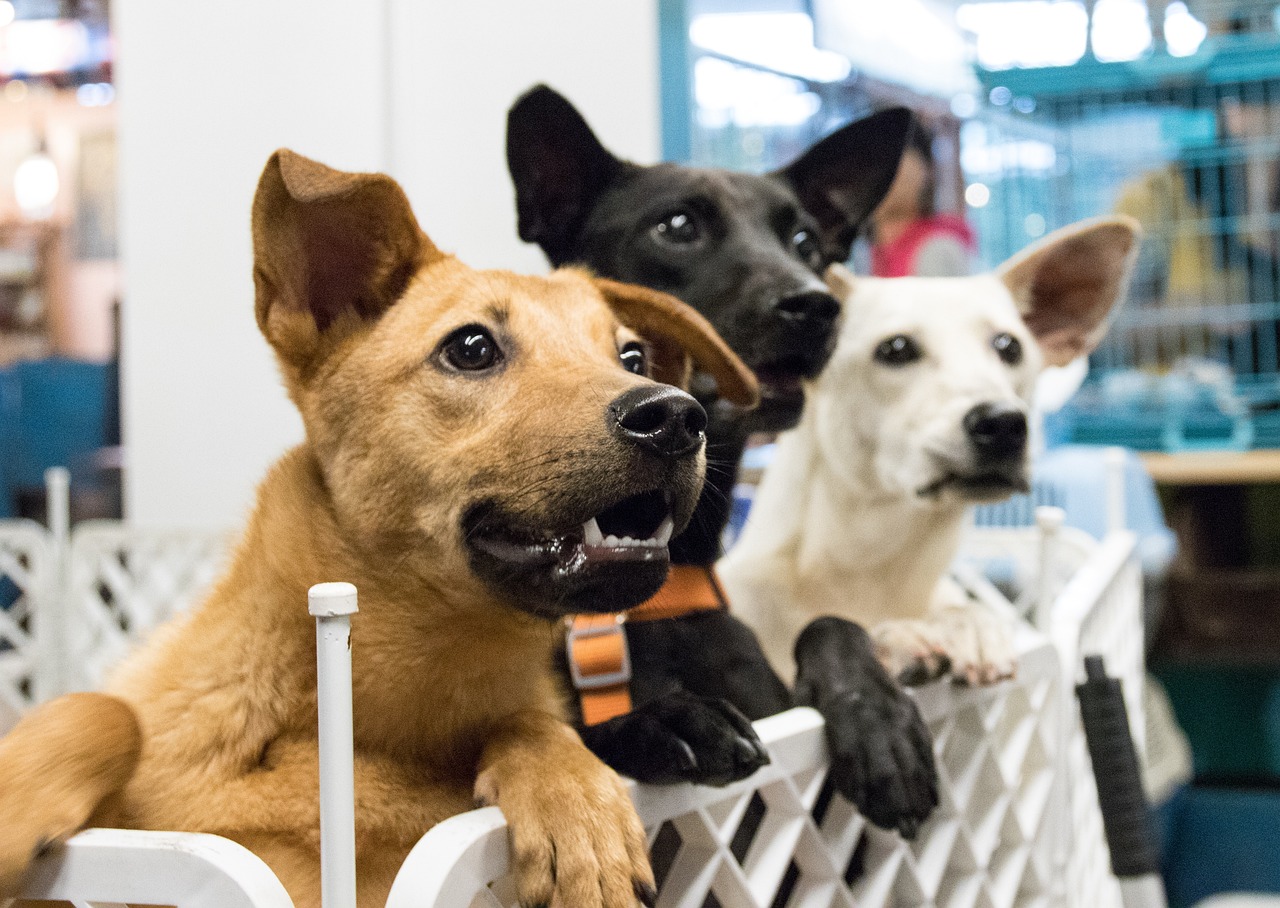
Identifying Potential Ambassadors
Finding the right individuals to become adoption ambassadors is essential for the success of your program. These ambassadors are not just volunteers; they are the heart and soul of your initiative, acting as vital links between the community and the pets in need of loving homes. To identify potential ambassadors, consider looking for individuals who are not only passionate about animal welfare but also possess the right skills and experiences. Think of them as the champions of your cause—people who can inspire others to take action.
Start by reaching out to your existing network of volunteers, foster caregivers, and community members. These individuals often have firsthand experience with pets and a genuine desire to promote adoption. They understand the challenges and joys of pet ownership and can share their stories to connect with potential adopters on a personal level. It’s like assembling a team of superheroes, each with their unique powers to advocate for animals in need!
In addition to tapping into your current network, consider the following avenues for identifying potential ambassadors:
- Local Animal Shelters: Collaborate with shelters to identify passionate staff and volunteers who have shown dedication to animal welfare.
- Pet Fostering Communities: Engage with individuals who have fostered pets and can share their experiences and insights.
- Social Media Groups: Explore local Facebook groups or online forums dedicated to pet lovers, where you can find enthusiastic individuals eager to help.
- Community Events: Attend local pet fairs, adoption events, or educational seminars to meet potential ambassadors in person and gauge their interest.
Remember, the goal is to find individuals who not only have a love for animals but also possess the ability to communicate effectively and engage with the community. Look for qualities such as enthusiasm, empathy, and strong interpersonal skills. These attributes will help them connect with potential adopters and convey the importance of adopting rather than shopping for pets.
Once you’ve identified potential ambassadors, it’s crucial to engage them in a way that makes them feel valued and motivated. Consider hosting an informational session where you can share the vision of the Adoption Ambassador Program, outline what the role entails, and discuss how they can make a difference in the lives of both pets and people. This session can serve as a platform to answer any questions and clarify expectations, ensuring everyone is on the same page from the start.
Ultimately, identifying potential ambassadors is about building a community of passionate advocates who share your vision of increasing pet adoption rates. By fostering these relationships, you can create a network of support that not only helps animals find homes but also enriches the lives of those who participate in the program. It’s a win-win situation that benefits everyone involved!
Q: What qualities should I look for in an adoption ambassador?
A: Look for individuals who are passionate about animal welfare, possess strong communication skills, and have experience with pets. Enthusiasm and empathy are key traits that will help them connect with potential adopters.
Q: How can I engage the community to find potential ambassadors?
A: Organize events, attend local pet fairs, and utilize social media to spread the word about your program. Creating a welcoming environment will encourage community members to get involved.
Q: What if I can't find enough volunteers?
A: Don’t get discouraged! Focus on building relationships with a few dedicated individuals first. As your program gains visibility and success, more people will likely want to join your cause.
Recruitment Strategies
Recruiting the right individuals to become Adoption Ambassadors is a crucial step in establishing a successful program. It’s not just about finding volunteers; it’s about discovering passionate advocates who genuinely care about animal welfare and are eager to make a difference. One effective strategy is to host informational sessions where potential ambassadors can learn about the program and its impact. These sessions can be casual meet-and-greets or more structured presentations that outline the responsibilities and rewards of being an ambassador.
Another powerful tool in your recruitment arsenal is social media. Platforms like Facebook, Instagram, and Twitter can be leveraged to spread the word about your program. Sharing engaging content, such as heartwarming success stories of pets finding their forever homes, can resonate with your audience and inspire them to get involved. Additionally, consider creating eye-catching graphics or videos that highlight the role of adoption ambassadors, making it easier for people to understand how they can contribute.
Collaboration with local organizations is also key. Reach out to pet-related businesses, community centers, and even schools to partner in your recruitment efforts. These organizations often have established networks and can help promote your program to a wider audience. For instance, hosting a joint event, like a pet adoption day or a community fair, can provide a platform for potential ambassadors to learn more about your cause while enjoying a fun day out.
To further enhance your recruitment strategies, consider implementing a referral program. Encourage current ambassadors to invite friends or family members who might be interested in joining the cause. This not only helps to expand your network but also fosters a sense of community among your ambassadors. Remember, when people are connected through shared values and interests, they are more likely to stay engaged and committed to the mission.
In summary, a multifaceted approach to recruitment that includes informational sessions, social media outreach, community collaboration, and referral programs can significantly increase your chances of finding dedicated adoption ambassadors. By casting a wide net and appealing to the passions of your community, you’ll be well on your way to building a strong team of advocates who will help promote pet adoption and make a lasting impact.
Engaging the Community
Engaging the community is a cornerstone of a successful Adoption Ambassador Program. When you think about it, fostering a sense of community is like planting a garden; it requires care, attention, and the right environment to flourish. By organizing events that not only educate but also involve the public, you can create a vibrant atmosphere where people feel connected to the cause of pet adoption. Consider hosting local events such as adoption fairs, where potential adopters can meet pets in need of homes. This face-to-face interaction can spark emotional connections that lead to successful adoptions.
Moreover, collaboration with local businesses can amplify your outreach. Imagine a pet-friendly café hosting a “Pet Adoption Day” where your ambassadors can showcase adoptable pets. This not only promotes adoption but also strengthens community ties. You could even set up a booth at local farmers' markets or festivals, engaging passersby with stories of pets looking for their forever homes. The more you put your ambassadors in the spotlight, the more they can share their passion and knowledge about the importance of pet adoption.
Another effective strategy is to create community challenges or contests that encourage participation. For example, a “Pet Selfie Contest” where community members share photos of their pets with a specific hashtag can generate buzz on social media. This not only raises awareness about your program but also creates a sense of belonging among participants. Remember, the goal is to make everyone feel like they are part of something bigger—something that contributes positively to the lives of animals and the community.
Finally, don't underestimate the power of feedback. After events, gather input from participants to see what worked and what could be improved. This shows that you value their opinions and are committed to making the program better. Engaging the community is not just about outreach; it’s about building lasting relationships that foster a culture of compassion and responsibility toward pets in need.
- What is an Adoption Ambassador Program?
An Adoption Ambassador Program is a community-driven initiative that empowers individuals to advocate for pet adoption, educate the public, and help connect potential adopters with pets in need.
- How can I become an adoption ambassador?
If you’re passionate about animal welfare, reach out to local shelters or rescue organizations to express your interest. They often have specific requirements or training sessions for new ambassadors.
- What types of events can I organize to engage the community?
Consider hosting adoption fairs, educational workshops, pet-friendly events, or contests that encourage community participation and raise awareness for pet adoption.
- How can social media help in engaging the community?
Social media platforms can be used to share success stories, highlight events, and create engaging content that attracts potential adopters and ambassadors to your program.
Online Outreach
In today's digital age, is a game-changer for any Adoption Ambassador Program. With the vast reach of social media and the internet, you can connect with potential adopters and ambassadors like never before. Imagine casting a net over your entire community and beyond, pulling in not just those who are looking to adopt, but also passionate individuals eager to promote animal welfare. The key is to create engaging, shareable content that resonates with your audience.
Start by utilizing popular social media platforms such as Facebook, Instagram, and Twitter. These platforms are not just for personal updates; they are powerful tools for storytelling. Share heartwarming success stories of pets who found their forever homes, showcasing the joy and transformation that adoption brings. Use captivating images and videos that tug at the heartstrings, making it easy for followers to share your posts with their networks.
Additionally, consider creating a dedicated blog or website section for your ambassador program. This space can serve as a hub for information, featuring profiles of your ambassadors, upcoming events, and resources for potential adopters. A well-structured blog can improve your SEO and drive traffic to your site, increasing visibility for your program. Regularly updated content, such as articles on pet care, adoption tips, and community events, keeps your audience engaged and informed.
To further enhance your outreach, don’t underestimate the power of email newsletters. They are a direct line to your supporters and can be used to highlight upcoming events, share success stories, and recognize the efforts of your ambassadors. Make sure your emails are visually appealing and include clear calls to action, encouraging readers to get involved or share your message.
Finally, consider collaborating with local influencers or organizations that align with your mission. A partnership can amplify your reach and introduce your program to new audiences. Whether it’s through joint events, social media takeovers, or cross-promotions, these collaborations can create a buzz and generate excitement around pet adoption.
In summary, harnessing the power of online outreach can significantly boost the visibility and effectiveness of your Adoption Ambassador Program. By sharing compelling stories, engaging with your community, and leveraging digital tools, you can inspire more people to adopt and become ambassadors themselves.
- What is an Adoption Ambassador Program? An Adoption Ambassador Program is a volunteer initiative where individuals advocate for pet adoption, helping to connect potential adopters with animals in need.
- How do I become an Adoption Ambassador? Interested individuals can reach out to local shelters or organizations to express their interest, often involving an application or interview process.
- What kind of training do ambassadors receive? Ambassadors typically receive training on animal welfare, effective communication, and how to share adoption stories to inspire others.
- Can I volunteer if I don’t have experience with animals? Yes! Many organizations welcome individuals who are passionate about animal welfare, and training will be provided.
- How can social media help in promoting pet adoption? Social media allows for storytelling, sharing success stories, and connecting with a wider audience, making it a vital tool for outreach and engagement.
Training and Support for Ambassadors
When it comes to creating a successful Adoption Ambassador Program, training and support are the backbone that holds everything together. Just like a well-oiled machine, each ambassador needs the right tools and knowledge to effectively advocate for pet adoption. This isn't just about handing out flyers or sharing posts on social media; it's about empowering individuals to become passionate advocates for animals in need. So, how do we ensure our ambassadors are equipped for this vital role?
First and foremost, providing comprehensive training sessions is essential. These sessions should cover various topics, including the adoption process, animal behavior, and effective communication strategies. By educating ambassadors on these key areas, they can confidently engage with potential adopters and answer any questions that may arise. Imagine walking into a pet adoption event with a wealth of knowledge at your fingertips; that’s the kind of confidence we want to instill in our ambassadors!
Moreover, it's crucial to offer ongoing support throughout their journey. This can take many forms, such as regular check-ins, access to resource materials, and opportunities for further training. For instance, consider creating a dedicated online platform where ambassadors can share experiences, ask questions, and receive feedback. This community aspect not only fosters camaraderie among ambassadors but also encourages continuous learning and improvement.
Another vital component of support is recognizing that each ambassador may have unique strengths and weaknesses. Some may excel in public speaking, while others might shine in one-on-one interactions. By acknowledging these differences, you can tailor support to meet individual needs. For example, you might offer specialized workshops on public speaking for those who want to enhance their presentation skills or provide resources for those who prefer to connect with adopters through written communication.
Lastly, don’t forget to celebrate successes! Recognizing the hard work and dedication of your ambassadors can go a long way in keeping their spirits high. Whether it’s through a simple thank-you note, a shout-out on social media, or organizing appreciation events, showing gratitude can motivate ambassadors to continue their important work. Remember, a happy ambassador is a productive ambassador!
In summary, a robust training and support system is essential for the success of your Adoption Ambassador Program. By equipping your ambassadors with the necessary knowledge, providing ongoing support, and recognizing their contributions, you’ll create a passionate team ready to advocate for pet adoption and make a real difference in the community.
- What qualifications do I need to become an adoption ambassador?
While there are no strict qualifications, a passion for animal welfare and experience with pets are highly beneficial.
- How much time do I need to commit to the program?
The time commitment can vary based on your availability and the needs of the program, but even a few hours a month can make a significant impact.
- Will I receive training before starting?
Absolutely! We provide comprehensive training to ensure you feel confident in your role as an ambassador.
- How can I stay updated on the program's activities?
We will have regular meetings and an online platform where ambassadors can access updates and resources.

Creating a Structured Program
When it comes to establishing an Adoption Ambassador Program, creating a structured framework is essential for success. A well-defined program not only clarifies the roles and responsibilities of your ambassadors but also aligns their efforts with the overarching goals of your organization. Imagine trying to build a house without a blueprint; it might stand, but it’s likely to be shaky and misaligned. Similarly, your ambassador program needs a solid foundation to thrive.
To kick off your structured program, begin by outlining the specific roles that ambassadors will play. This could range from social media promotion and community outreach to organizing adoption events and fostering relationships with potential adopters. By clearly defining these roles, you empower your ambassadors to understand their contributions and how they fit into the bigger picture.
Next, it’s vital to establish goals for your program. What do you hope to achieve through your ambassadors? Whether it’s increasing adoption rates by 20% or enhancing community awareness about pet adoption, having measurable objectives provides direction and motivation. Here’s a simple table to illustrate how you might set these goals:
| Goal | Metric | Timeline |
|---|---|---|
| Increase Adoption Rates | 20% increase | 6 months |
| Community Engagement | Host 5 events | 1 year |
| Social Media Reach | 500 new followers | 3 months |
In addition to setting goals, you should also create a system for tracking progress. Regular assessments, perhaps on a quarterly basis, will help you evaluate how well your ambassadors are doing in meeting these goals. This not only keeps everyone accountable but also allows for adjustments to the program as needed. Think of it as checking your GPS while on a road trip; if you veer off course, you can recalibrate and get back on track.
Another critical aspect of a structured program is the provision of resources and support. Ambassadors need tools to succeed, whether that’s access to promotional materials, training sessions, or ongoing mentorship. Consider hosting workshops that cover topics like effective communication, social media strategies, and pet care knowledge. This investment in your ambassadors pays off in the form of more confident and capable advocates.
Finally, it’s important to foster a sense of community and camaraderie among your ambassadors. Regular meetings or social events can help build relationships, share experiences, and celebrate successes. After all, a team that feels connected is more likely to be motivated and engaged in their work.
In summary, creating a structured Adoption Ambassador Program involves defining roles, setting measurable goals, tracking progress, providing resources, and nurturing a supportive community. With this framework in place, you’re setting the stage for a successful program that not only promotes pet adoption but also enriches the lives of those involved.
- What is an Adoption Ambassador Program? - An initiative that engages volunteers to promote pet adoption and connect potential adopters with animals in need.
- How can I become an Adoption Ambassador? - Interested individuals can contact local shelters or organizations to express their interest and learn about the application process.
- What kind of training do ambassadors receive? - Ambassadors typically receive training on animal care, effective communication, and social media outreach strategies.
- Are there any rewards for being an ambassador? - Many programs offer recognition, incentives, and opportunities for personal growth and community involvement.
Setting Goals and Metrics
When it comes to establishing an effective Adoption Ambassador Program, setting clear goals and metrics is not just a good idea—it's essential. Think of your program as a ship sailing across the ocean; without a destination (or goal), you might drift aimlessly. The goals you set will serve as your compass, guiding your ambassadors and ensuring everyone is on the same page. So, what should these goals look like? They can range from increasing the number of adoptions in a specific timeframe to enhancing community awareness about pet adoption.
To break it down further, consider implementing both short-term and long-term goals. Short-term goals might include:
- Recruiting a specific number of ambassadors within the first three months.
- Hosting at least two community events to promote adoptions in the next quarter.
- Increasing social media engagement by 25% over the next month.
On the other hand, long-term goals could involve:
- Achieving a 50% increase in pet adoptions over the year.
- Building partnerships with five local businesses to support the program.
- Creating a sustainable network of ambassadors who can continue the work for years to come.
Now, how do you measure the success of these goals? This is where metrics come into play. Metrics are like the gauges on your ship, providing real-time feedback on your progress. You can track various metrics such as:
- The number of pets adopted through ambassador referrals.
- Engagement rates on social media posts related to the program.
- The number of community events held and their attendance rates.
Regularly reviewing these metrics will allow you to assess what’s working and what isn’t. For instance, if you notice that a particular event led to a spike in adoptions, you might want to replicate that event or adjust your strategy to focus on similar initiatives. Conversely, if social media engagement is low, it may be time to rethink your content strategy or explore new platforms.
Ultimately, setting goals and metrics is not just about numbers; it’s about creating a dynamic and responsive program that can adapt to the needs of the community and the pets you serve. Celebrate your wins, learn from your setbacks, and keep that ship sailing toward a brighter future for all the furry friends waiting for their forever homes!
Q: What is an Adoption Ambassador Program?
A: An Adoption Ambassador Program is an initiative designed to recruit volunteers who advocate for pet adoption, connect potential adopters with animals in need, and promote animal welfare within the community.
Q: How can I become an adoption ambassador?
A: You can become an adoption ambassador by reaching out to local animal shelters or rescue organizations to express your interest. They often have application processes or informational sessions to get you started.
Q: What kind of training will I receive as an ambassador?
A: Training typically includes information about the adoption process, animal care, effective communication techniques, and how to engage the community. Many programs also provide ongoing support and resources.
Q: Are there any rewards for being an ambassador?
A: Yes! Many programs recognize and reward ambassadors through appreciation events, certificates, or even incentives for outstanding contributions to the program.
Recognizing and Rewarding Ambassadors
Recognizing and rewarding your adoption ambassadors is not just a nice gesture; it’s a vital component of maintaining enthusiasm and commitment within your program. When these passionate individuals dedicate their time and energy to advocate for pet adoption, it's essential to show them that their efforts are appreciated. After all, a little appreciation can go a long way in keeping spirits high and motivation strong!
One effective way to recognize ambassadors is through public acknowledgment. This can be achieved during community events or through social media shout-outs. Imagine the joy an ambassador feels when they see their name or picture featured on your organization's social media page! Such recognition not only boosts their morale but also highlights their contributions to the community, inspiring others to get involved.
Additionally, consider organizing thank-you events specifically for your ambassadors. These gatherings can serve as both a celebration of their hard work and an opportunity for them to network with one another. Whether it’s a casual picnic in the park or a more formal dinner, providing a space for ambassadors to connect can foster a sense of community and belonging. Here’s a simple table to illustrate some potential event ideas:
| Event Type | Description |
|---|---|
| Picnic | A casual outdoor gathering with food and games. |
| Formal Dinner | A sit-down dinner to celebrate achievements and share stories. |
| Volunteer Appreciation Day | A day dedicated to recognizing all volunteers with awards and activities. |
Moreover, implementing a system of incentives can further enhance motivation. Consider offering small rewards for outstanding contributions, such as gift cards, branded merchandise, or even exclusive experiences like behind-the-scenes tours of your facility. These incentives create a friendly competition among ambassadors, encouraging them to go above and beyond in their roles.
It’s also important to gather feedback from your ambassadors about how they prefer to be recognized. Some may appreciate public acknowledgment, while others might prefer a more private form of appreciation. By actively involving them in the conversation, you not only show that you value their input but also tailor your recognition efforts to what truly resonates with them.
In conclusion, recognizing and rewarding your adoption ambassadors is essential for sustaining their enthusiasm and commitment. By publicly acknowledging their efforts, organizing appreciation events, and offering meaningful incentives, you create an environment where ambassadors feel valued and motivated to continue their important work in promoting pet adoption. Remember, a little recognition can transform an ordinary volunteer experience into an extraordinary journey of advocacy!
- What is an Adoption Ambassador? An Adoption Ambassador is a volunteer who advocates for pet adoption, helping to connect potential adopters with animals in need.
- How can I become an Adoption Ambassador? You can become an ambassador by reaching out to your local animal shelter or rescue organization and expressing your interest in volunteering.
- What kind of training do ambassadors receive? Ambassadors typically receive training on animal welfare, effective communication strategies, and how to promote pet adoption.
- How do you recognize ambassadors? Recognition can include public acknowledgment, appreciation events, and offering incentives for outstanding contributions.
Frequently Asked Questions
- What is an Adoption Ambassador Program?
An Adoption Ambassador Program is a community-driven initiative that empowers individuals to advocate for pet adoptions. These ambassadors connect potential adopters with animals in need, fostering a supportive environment for animal welfare and increasing adoption rates.
- Who can become an Adoption Ambassador?
Anyone with a passion for animal welfare can become an Adoption Ambassador! Ideal candidates include volunteers, foster caregivers, and community members who have experience with pets and a desire to promote adoption. If you love animals and want to make a difference, you could be a great fit!
- How can I find potential ambassadors for the program?
Finding potential ambassadors can be done through various strategies. Consider hosting informational sessions to educate the community, leveraging social media to reach a broader audience, and collaborating with local organizations that share your mission. These methods can help attract dedicated individuals eager to support your cause.
- What kind of training do ambassadors receive?
Ambassadors receive comprehensive training that equips them with the knowledge and skills necessary for their advocacy roles. This includes workshops, resources on pet care and adoption processes, and ongoing support to ensure they feel confident and effective in their efforts.
- How do I measure the success of the Adoption Ambassador Program?
Success can be measured by setting clear goals and metrics. Regular assessments allow you to evaluate the program's effectiveness, identify areas for improvement, and celebrate achievements. Metrics could include the number of adoptions facilitated, community engagement levels, and feedback from ambassadors.
- What rewards or recognition can ambassadors expect?
Recognizing and rewarding ambassadors is crucial for motivation. You can implement a system of appreciation that includes thank-you events, certificates, or incentives for outstanding contributions. A little recognition goes a long way in keeping ambassadors engaged and committed!
- How can social media be utilized in the program?
Social media is a powerful tool for outreach! You can share success stories, highlight the work of ambassadors, and create engaging content that attracts potential adopters and ambassadors alike. Platforms like Facebook, Instagram, and Twitter can significantly enhance your program's visibility.

